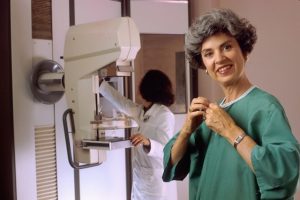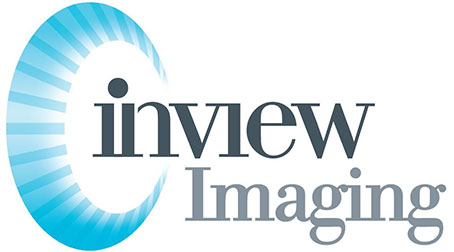From scheduling to post-appointment care, these expert mammogram tips will help you navigate your screening with ease. Discover how to prepare, what to expect during the procedure, and ways to ensure a comfortable visit. Plus, learn about the importance of regular screenings in maintaining breast health and early detection of any concerns. Stay informed and empowered throughout your mammogram journey.
Key Takeaways

-
Schedule early morning appointments to reduce wait times and start the day stress-free.
-
Avoid caffeine before the mammogram to minimize breast discomfort and improve imaging accuracy.
-
Wear comfortable two-piece clothing for ease during the procedure and quick access for imaging.
-
Skip deodorant or antiperspirant on the day of the mammogram to prevent interference with the results.
-
Communicate any breast changes to the technician to ensure accurate interpretation of the images.
-
Inform about breast implants beforehand to allow for specialized techniques during the mammogram.
Schedule early morning appointments
When booking mammogram appointments, opt for early mornings to reduce waiting times and ease anxiety. This choice can help you start your day with the appointment, ensuring that you have ample time afterward to relax and recover from any discomfort or stress. Confirming your appointment time a day before can prevent any last-minute issues, allowing you to prepare adequately for the visit.
Early morning slots at the health care facility tend to be less crowded, leading to shorter wait times and a more efficient process. By choosing this time, you can potentially avoid delays and ensure a smoother experience during your mammogram. Having the appointment early in the day can help you manage any unexpected results or follow-up procedures promptly.
Planning your mammogram in the morning not only benefits your schedule but also your overall health. It allows you to prioritize this important screening without disrupting your daily routine significantly. Moreover, starting your day with this essential health check can set a positive tone for the rest of your activities, promoting a proactive approach to healthcare.
In summary, scheduling early morning mammogram appointments offers various advantages such as reduced wait times, lower anxiety levels, and better time management. By choosing this option and confirming your appointment in advance, you can streamline the process and prioritize your health effectively.
Avoid caffeine before the mammogram
Refrain from consuming coffee or tea on the day of the exam to reduce breast tenderness. Caffeine can lead to increased breast sensitivity, making the mammogram experience more uncomfortable. Opt for herbal teas or water as alternatives to stay hydrated without caffeine, ensuring a smoother screening process.
Consider the effects of caffeine on anxiety levels before the appointment. Reducing caffeine intake can help alleviate any additional stress or worries associated with the mammogram. By avoiding caffeine, you can minimize discomfort during the procedure and enhance the overall experience.
Studies have shown that caffeine restriction before mammograms can significantly decrease breast discomfort and pain. This simple adjustment in your routine can make a notable difference in how you feel during and after the screening. Prioritizing your comfort by avoiding caffeine is a small step that can have a big impact on your mammogram experience.
Wear comfortable two-piece clothing
When preparing for a mammogram, wearing comfortable two-piece clothing can significantly ease the process and ensure a smoother experience. Opting for loose-fitting tops is crucial as they provide easy access for the mammogram technician to perform the procedure effectively.
Avoiding one-piece outfits is recommended as it simplifies the dressing process post-examination. With a two-piece outfit, you can quickly change back into your clothes without any hassle, saving time and ensuring convenience.
Choosing breathable fabrics for your clothing can enhance comfort during the mammogram. Fabrics like cotton or soft blends allow your skin to breathe, reducing any discomfort you may feel during the procedure. Breathable materials help regulate body temperature, preventing excessive sweating or overheating.
Skip deodorant or antiperspirant
When going for a mammogram, avoid using deodorant or antiperspirant to prevent any interference with the imaging results. Residue from these products can impact the clarity of mammogram images, potentially leading to the need for repeat screenings. It’s crucial to leave these items at home on the day of your mammogram to ensure accurate results.
Deodorants and antiperspirants contain substances that can show up on mammogram images, mimicking suspicious areas that may require further evaluation. By refraining from using these products before your appointment, you help radiologists obtain clear and accurate images for effective breast cancer screening.
If you prefer to use deodorant or antiperspirant regularly, consider this as an opportunity to explore natural alternatives. Natural deodorants made from ingredients like baking soda, arrowroot powder, and essential oils can be effective in controlling odor without interfering with mammogram results.
In addition to avoiding deodorant and antiperspirant, it’s advisable to also skip lotions, powders, and perfumes on the day of your mammogram. These products can contain substances that may affect imaging quality as well. By following these guidelines and opting for natural alternatives when needed, you contribute to the accuracy of your mammogram results.
Communicate any breast changes
When going for breast mammograms, it is crucial to communicate any breast changes you have noticed. Inform the technician about any lumps, pain, or changes you’ve experienced. Be specific about the duration and nature of these symptoms to help in accurate assessment.
It is essential to ensure that your concerns are documented during the screening process. This documentation plays a vital role in the breast cancer diagnosis and helps in evaluating the mammogram reports effectively. By communicating openly about any changes in your breasts, you contribute to a more thorough examination and potentially early detection of breast cancer.
In case you receive your patient mammogram results, reviewing them with your healthcare provider becomes pivotal. Any abnormalities or concerns noted in the mammogram report should be discussed promptly to determine the next steps for further evaluation or follow-up screenings.
Inform about breast implants
Breast implants can impact the mammogram process, requiring specialized techniques for accurate imaging. Disclosing the presence of implants to the healthcare provider is crucial to ensure appropriate measures are taken during the mammogram.
If you have undergone breast augmentation surgery or experienced any complications with your implants, it is essential to discuss these details with the medical staff before the mammogram. This information helps them tailor the procedure to accommodate your specific needs and ensure optimal results.
Understanding how breast implants may affect the mammogram process and results is vital. Implants can sometimes make it challenging to detect abnormalities in breast tissue, leading to potential issues like obscured views or false positives. Communicating with your healthcare provider about your implants allows them to adjust the imaging techniques accordingly.
In some cases, additional imaging such as ultrasound or MRI might be recommended to obtain a clearer picture of the breast tissue when implants are present. By addressing concerns and providing comprehensive information about your implants, you enable healthcare professionals to deliver accurate and effective mammogram screenings tailored to your individual circumstances.
Discuss family history with the technician
Sharing family medical history during your mammogram is crucial for a personalized screening. This information helps the technologist understand your risk factors and tailor the screening approach accordingly.
By mentioning any relatives with breast cancer or related conditions, you provide valuable insights that can impact the diagnosis and screening process. Understanding how your family history may influence future screenings is essential for early detection and prevention.
When discussing your family history with the mammogram technologist, be prepared to provide details about any relatives who have had breast cancer, ovarian cancer, or other relevant conditions. This information can guide decisions about additional imaging tests or genetic counseling.
Being proactive about sharing your family history can lead to more targeted screenings and potentially earlier detection of any abnormalities. This proactive approach aligns with recommendations from leading radiology and imaging societies, emphasizing the importance of personalized care based on individual risk factors.
Prepare for potential discomfort
During a mammogram screening, it’s important to acknowledge that some level of discomfort is normal. However, there are ways to make the experience more manageable for the patient. Here are some tips to help you prepare:
-
Consider taking pain relief: If you are particularly sensitive or anxious about potential discomfort, consult with your healthcare provider about taking pain relief medication before the procedure. This can help alleviate any pain or discomfort during the screening.
-
Focus on relaxation techniques: Practicing relaxation techniques such as deep breathing or visualization can help ease any discomfort experienced during the mammogram. Relaxing your muscles and mind can make the process more tolerable.
-
Communicate with your healthcare provider: Make sure to communicate openly with your healthcare provider about any concerns or fears you may have regarding discomfort during the screening. They can provide guidance and support to ensure a more comfortable experience.
Bring a list of questions
When preparing for your mammogram, bring a list of questions to ensure you make the most of your appointment. Here are some key points to consider:
-
Procedure: Inquire about the details of the mammogram procedure to understand what to expect during the screening.
-
Results: Ask about when and how you will receive your results, as well as who will interpret them and communicate the findings to you.
-
Follow-up care: Seek information on what happens after the mammogram, including any necessary follow-up appointments or additional tests.
Writing down your concerns about breast health and mammogram frequency can help you address specific issues with your healthcare provider. This proactive approach can lead to a more informative and productive mammogram experience.
Utilize this opportunity to clarify any uncertainties you may have about the process. By discussing your questions and concerns with your healthcare provider, you can gain a better understanding of the mammogram procedure and its implications for your breast health.
Having a prepared list of questions ensures that you cover all relevant topics during your appointment, empowering you to take an active role in your breast health journey.
Follow up on results promptly
Promptly following up on your mammogram results is crucial to ensure timely intervention and treatment if needed.
-
Contact your healthcare provider within a week of receiving your results to discuss any findings or concerns.
-
Understanding the significance of swift follow-ups can aid in early detection and improved outcomes.
-
Keeping a record of your mammogram schedule and results enables better tracking of changes over time.
Summary
Your mammogram experience can be smoother by following these tips: schedule early morning appointments, avoid caffeine, wear two-piece clothing, skip deodorant, communicate breast changes, inform about implants, discuss family history, prepare for discomfort, bring questions, and promptly follow up on results. Taking these steps can help you feel more comfortable and prepared for your mammogram appointment.
Make sure to implement these tips for your next mammogram to ensure a more successful and stress-free experience. Your proactive approach to your health is crucial in detecting any potential issues early on. By following these recommendations, you are taking a significant step in prioritizing your well-being. Remember, your health matters, so stay informed and proactive in caring for yourself.
Frequently Asked Questions
How should I prepare for a mammogram appointment?
To prepare for a mammogram appointment, wear comfortable two-piece clothing, avoid caffeine, skip deodorant, communicate any breast changes, inform about breast implants, discuss family history, prepare for potential discomfort, bring a list of questions, and follow up on results promptly.
What should I wear to a mammogram appointment?
It is recommended to wear comfortable two-piece clothing to a mammogram appointment. This type of clothing allows for easy removal of the top garment during the procedure, ensuring convenience and comfort.
Can I wear deodorant or antiperspirant before a mammogram?
It is advisable to skip deodorant or antiperspirant before a mammogram. These products can interfere with the imaging process and may affect the accuracy of the results. Following this guideline helps ensure the effectiveness of the mammogram.
Why is it important to schedule early morning appointments for mammograms?
Scheduling early morning appointments for mammograms can help reduce wait times and ensure that you are seen promptly. Earlier appointments may be more convenient for your daily schedule and can help start your day off positively.
How do I communicate any breast changes before a mammogram?
Before your mammogram, make sure to inform the technician about any breast changes you have noticed. Clear communication regarding these changes can help ensure that the technician focuses on specific areas of concern during the examination.


